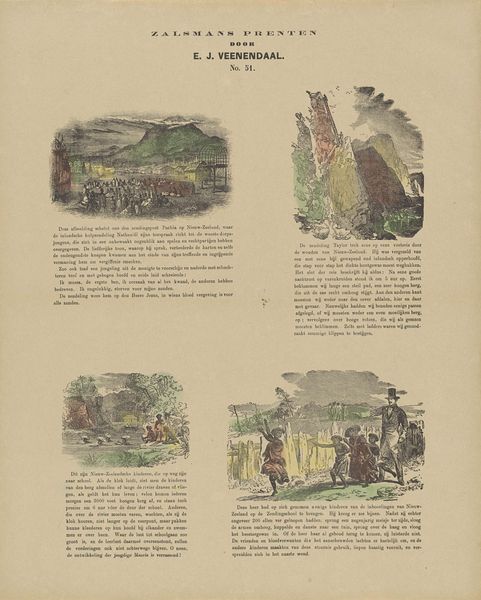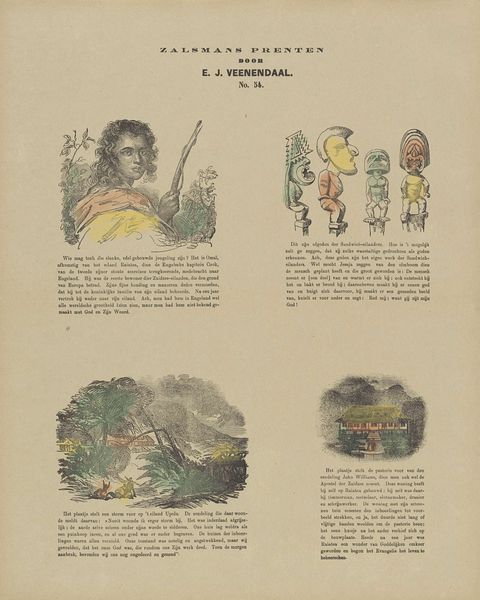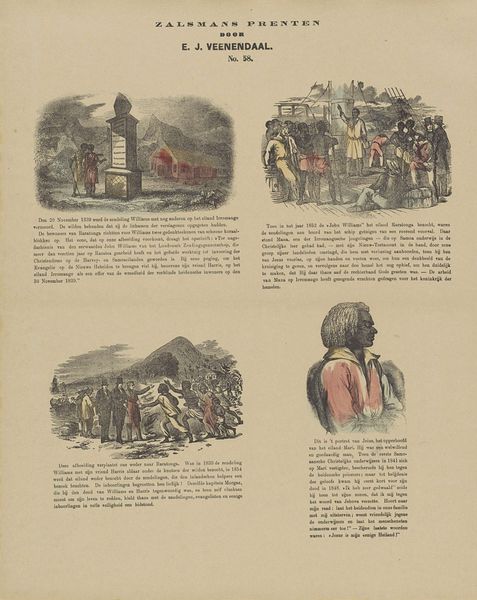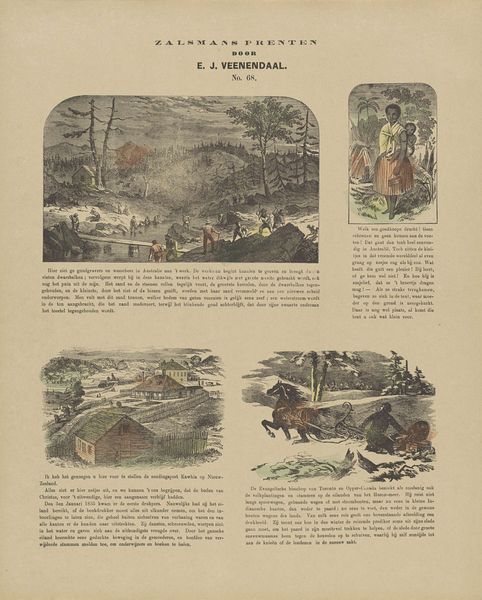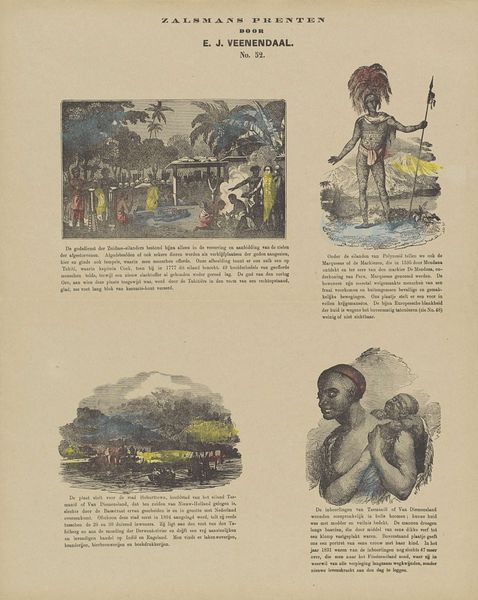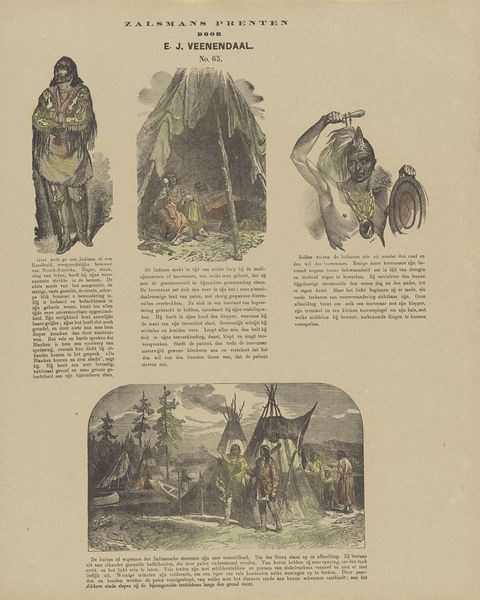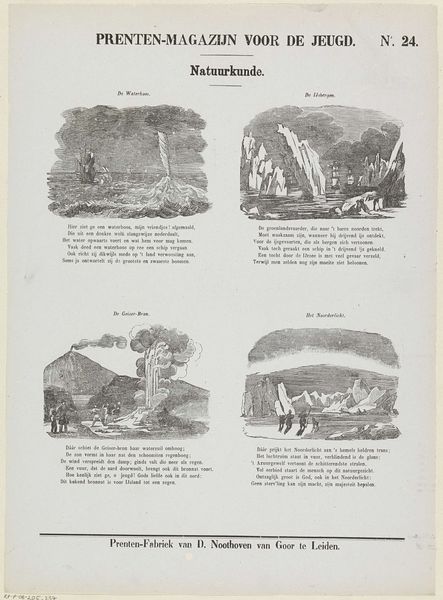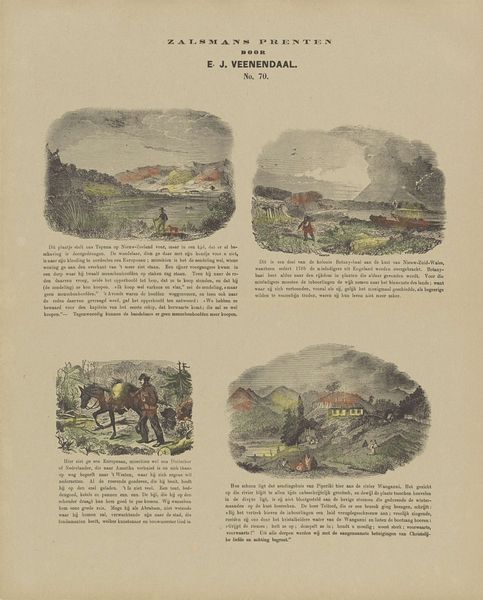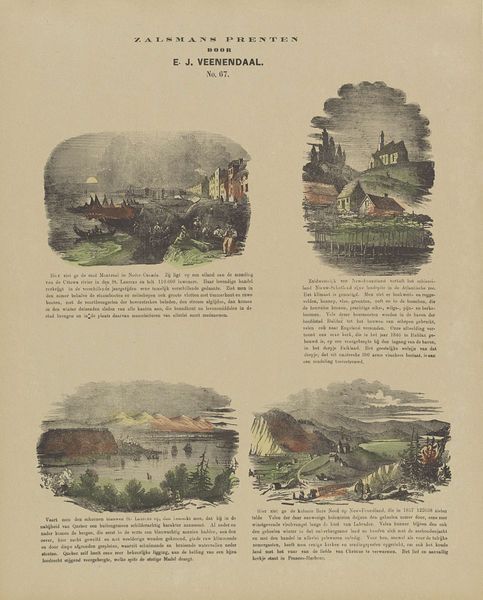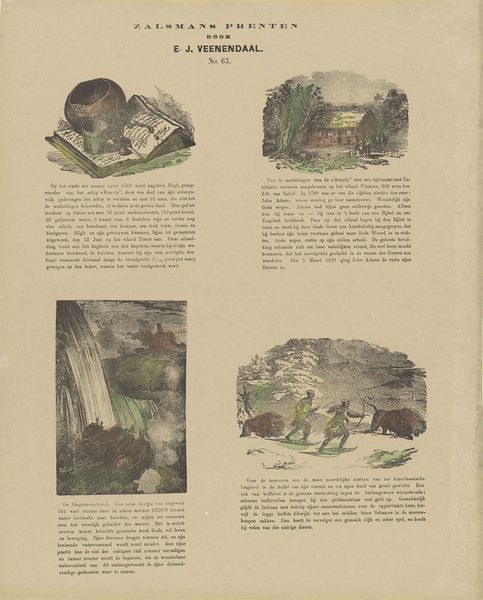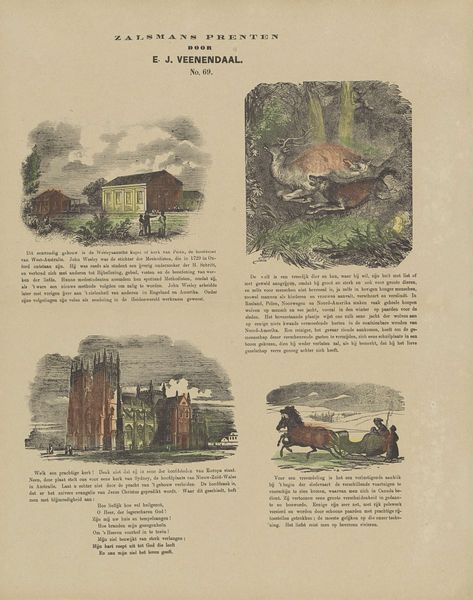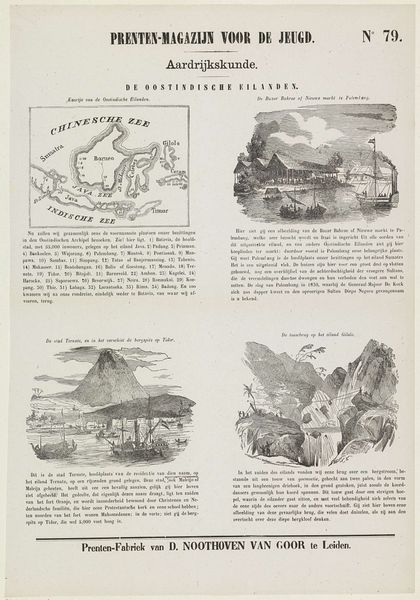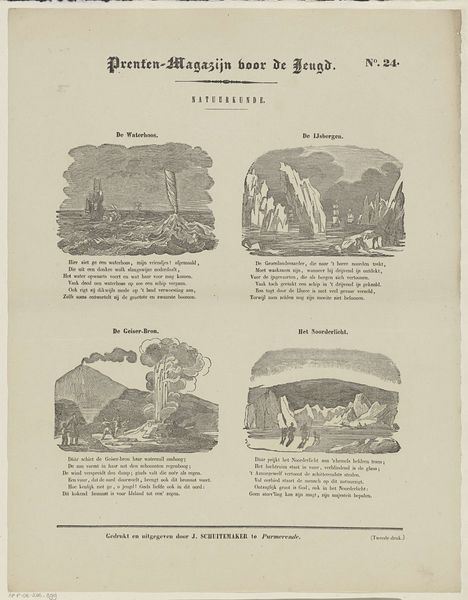
print, engraving
# print
#
history-painting
#
engraving
Dimensions: height 427 mm, width 345 mm
Copyright: Rijks Museum: Open Domain
Curator: Welcome. Let's discuss this 19th-century engraving by Gerhardus Philippus Zalsman entitled "Cookeilanden en bewoners," roughly translated as "Cook Islands and Inhabitants." What's your initial take? Editor: Well, first off, the stark black and white contrast gives it an immediate sense of drama. There's an element of the raw and perhaps, given the date, a slightly exoticized portrayal of both the landscape and its people. Curator: Absolutely. Zalsman created this print sometime between 1869 and 1882. I think this work reflects a broader European interest in and construction of narratives about the Pacific at this time. Observe how each of the quadrants centers different themes—Indigenous leadership, changing landscapes, and introduced religion and how the work reproduces common colonial tropes and visual metaphors about "distant" cultures and faraway lands. Editor: Yes, you're right to point that out. The choice of engraving also tells a story, a print that was meant for mass distribution which itself implies a broader narrative. And if you consider the materials—the ink, paper, printing process—they were all part of a global trade network built on, let's face it, exploitation. These materials weren't produced on the Cook Islands but were imported to tell the tale to European audiences, a detail easy to miss that makes the image’s construction all the more complicated. Curator: Precisely. The seemingly simple image is a potent artifact reflecting how cultures are perceived and often misrepresented across geographical divides, through the lenses of power. This intersection of colonial perspectives and image creation makes you ponder how perceptions were formed and entrenched during this era, shaping both the artistic style and also public imagination. Editor: Agreed. It’s a fascinating look at how material culture serves to spread uneven perceptions across large populations, both through artistry and what it portrays. These prints made the Cook Islands and other Pacific Islands tangible to European audiences while often omitting or distorting the Indigenous experiences. A tangible medium carrying both accurate and fabricated information simultaneously, the weight and consequences of that shouldn’t be overlooked. Curator: An intersectional, material-driven, perspective helps us navigate the layered narratives embedded within this 19th-century print, and what it was meant to communicate to Western European viewers. Editor: Yes, thinking about its materials, methods, and circulation is key to unpacking this seemingly simple engraving, as these details contribute to its lasting and impactful influence.
Comments
No comments
Be the first to comment and join the conversation on the ultimate creative platform.
